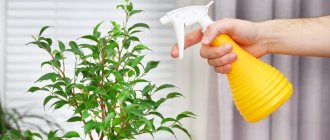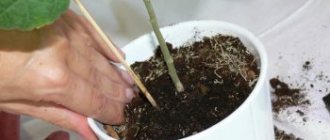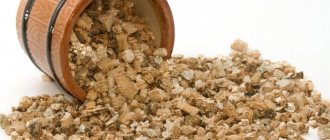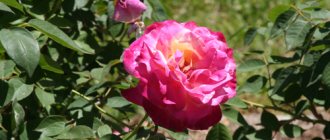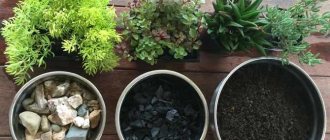- August 27, 2018
- Greens and herbs
- Michael
Probably, almost every reader who at least sometimes gets out into the forest has seen sphagnum - moss covering the soil in damp areas. Experienced people try to remember such places so that, if necessary, they can come there for a valuable plant. However, not everyone knows what it looks like and what it is needed for. Let's try to eliminate this gap in education.
What does he look like
Now it’s worth telling what moss looks like - in case the reader decides to stock it for future use.
Outwardly, it is very inconspicuous - a thin green stalk coming from the root, slightly branching upward. Covered with tiny leaves that wrap around it in a spiral. An interesting feature: sphagnum moss has no roots. What inexperienced pickers think is a root is actually a dead part. After all, sphagnum is a perennial plant. It freezes in the winter and continues to grow in the spring. Moreover, only the upper part grows - the lower part gradually dies, rots, and turns into peat.
It grows quite densely, mainly in damp places. Therefore, only the upper part receives enough light for development. In the lower part, located in the shade, and often in water, chlorophyll is gradually destroyed. Because of this, the plant turns from green to white. And the rotting part is brown.
Reproduction of sphagnum moss, like other mosses, occurs through spores. Sex cells mature on the stem, in which spores appear. When they are ripe enough, the sac bursts, and water and wind carry the tiny spores over a long distance.
Features of the plant and its life cycle
This is a perennial spore plant that does not have a root system. In the process of development and growth, they form straight shoots without branching, which are collected into dense turf, reminiscent of “pillows”.
Instead of a stem, phyllidia and caulidia are formed. The gaps that form between the elements have the ability to absorb moisture, which ensures the life cycle.
In addition to the phyllidia, which consist of only one cell layer, there is a third element. These are rhizoids, which are formally the root part. The thinnest threads of rhizoids branch very strongly and absorb moisture from the soil layer. One of their features is that over time the absorption process stops and the rhizoids perform only the function of support.
The life cycle is based on the alternation of sexual and asexual generations . Gametophyte is a sexual generation that has male and female gametes that give rise to asexual sporophytes. A gametophyte is a photosynthetic green plant.
A sporophyte is a spore generation that feeds on the gametophyte. Each sporophyte cell has a double set of chromosomes, whereas gametes have only one. The development of the sporophyte occurs due to cell division during the process of meiosis. The result of the process is a spore that has sex, becoming a single gametophyte. a constant, endless, life cycle occurs
Life cycle of sphagnum.
Where does it grow
Surely many readers are interested in where sphagnum moss grows in Russia. It can be found in dense forests, mainly in the northern regions of the country. Favorite habitat is swamps, banks of streams, small lakes, and rivers with weak currents.
In general, it can grow on almost any surface - earth, clay, stone, even iron and glass! The main thing is that there is enough moisture and at least a little sunlight. It is very rare to see it in the steppes, again close to sources of moisture.
Properties, differences from other mosses
Sphagnum has an interesting structure, different from other moss cousins. This green organism does not have roots or even rhizoids (thread-like formations of one or more cells for attachment to the substrate). It grows in very humid areas; water for growth and development goes directly into the stem and branches. In addition to the cells in which photosynthesis occurs, the stem, outside and inside, has an abundance of large dead cells, of which only the shells remain. Water accumulates in them, and in very large quantities. These reservoir cells have pore openings. With their help, they absorb and condense water vapor, thus replenishing the supply of moisture to nourish living cells. Its volume can be 20 times the volume of the plant itself. It turns out to be a real natural sponge - this is how the name of this plant is translated from Greek. The color of sphagnum is much paler than that of other mosses, sometimes it is even called white. As mentioned above, it has no roots, unlike, for example, cuckoo flax, with which it is often confused. The stem is branched with branches located in its upper part, which are arranged in a spiral. At the top, the branches gather into a shaggy head. The lower part of the stem is white-brown. Where such mosses appear, the rapid formation of raised bogs occurs. The lower parts of the plants die off annually, forming peat. In total, there are 320 species of sphagnum mosses, 42 are found in Eurasia. The most important features of this moss, which people have been using for their purposes for many centuries, are the following:
- exceptional ability to absorb large volumes of water (and gradually release it);
- pronounced bactericidal properties;
- the ability to increase the acidity of the environment.
Appearance
Now it’s worth telling what sphagnum moss looks like - the photos still give only a fairly superficial idea.
He cannot boast of a particularly outstanding appearance. It has a very thin green stem that starts at the root and stretches upward. It is distinguished by its emerald green color. The upper part is covered with small leaves arranged in a spiral. By the way, for the sake of clarity, it should be noted that this moss actually has no roots. And that brown part, which not very experienced botanists perceive as a root, is an old, dead part of the plant.
Sphagnum, despite its small size, is a perennial plant. As cold weather approaches, it freezes to continue life in the spring. It only grows upward, not sideways. The lower part dies over time, rots, becoming peat.
The stems grow very densely, most often in damp places. Because of this, only the upper part receives the light necessary for the development of green plants. And in the lower, shaded area, chlorophyll is destroyed over time, and it becomes white. Over time it rots, turning brown.
It reproduces, like most mosses, with the help of spores. They contain germ cells grown on the stem. After ripening, the sac bursts, and thanks to water and wind, light spores are carried over a considerable distance.
Where is it found?
Now it’s worth telling how to find sphagnum moss in nature - photos will help you easily identify it.
This valuable plant is most often found in the north of our country. Moreover, mainly in forest thickets, where high soil moisture is provided by small rivers and lakes, as well as streams and swamps.
Sphagnum is surprisingly unpretentious. Even weak, diffused sunlight is enough for it to develop successfully. In addition, it grows well on all surfaces: stones, clay, trees, earth, even glass and iron.
However, if we tell you where sphagnum moss grows in Russia, a photo of which is attached to the article, then it is worth noting that it can also be found in the steppe. But this place should be very wet - for example, somewhere near streams or lakes.
Similarities and differences with ferns
When discussing which group of plants peat moss belongs to, some people mistakenly believe that sphagnum is a fern. In fact, this information is erroneous; these are completely different plants, although their origin and development on the planet occurred simultaneously, and they have a number of similar features. One of them includes the presence of a stem, leaves and genitals. But they also have many differences. For example, unlike gymnosperm ferns, mosses are angiosperms.
Areas of application
Not everyone knows that this amazing plant is used in a variety of areas of human activity: crop production, construction, breeding pets, even medicine and cosmetology!
Certain features of sphagnum moss make it truly irreplaceable.
To begin with, it easily allows air to pass through, while easily trapping or releasing moisture. According to experts, moss is capable of absorbing moisture, the volume of which is twenty times greater than its own! A real miracle of nature. Equally important, it has antiseptic properties. This is what makes it very popular in extreme medicine.
However, in order not to be unfounded, we will talk about its application in different areas in more detail.
What is sphagnum moss?
This is a marsh plant from the Sphagnaceae family, which thrives in an environment that is destructive for many representatives of the flora. It can grow almost anywhere - glass, metal, stone surfaces, tree trunks. The perennial has no root system. The stem is branched. The lower part quickly atrophies. The leaves gradually covering the branches are very small and grow in a spiral.
The name of the plant translates as sponge. This is due to the fact that it can absorb liquid whose volume is two dozen times greater than its own. The image of a crop growing on rocky rock in nature in the picture below clearly demonstrates how unusual it is.
Use in floriculture
Of course, sphagnum moss is most often used for indoor plants. It is almost impossible to list all the methods of application here. Let's talk at least about the main ones.
To begin with, germinate the seeds. There is no need to use a damp cloth, which has to be wetted in a warm and dry apartment 2-3 times a day. Just wrap the seeds in a piece of sphagnum moss, water them thoroughly, put them in a place where they will not be disturbed, and forget about them for a few days. First, the moss will absorb excess moisture, so the seeds will definitely not rot. And then, as they dry, it will release moisture, moisturizing the seeds and providing suitable conditions for germination.
The same effect can be used when caring for adult plants. Simply lay sphagnum moss in a thick layer on the soil in the pot - and you can water the flower several times less often than usual.
Also, such a solution allows us to solve the problem of infectious and bacteriological diseases. You can rest assured that a plant that comes into contact with this moss will definitely not become infected, and all thanks to the same antiseptic properties. Fungi and mold will also not cause the slightest problem.
At the same time, moss makes the soil where it grows softer and looser. Of course, this has a positive effect on the process of germination, rooting and further growth of ornamental flowers and shrubs.
Finally, it can always be crushed and mixed with soil. Quickly rotting, it turns into peat, which nourishes the plant with all the necessary substances. So sphagnum moss for indoor plants is a real gift, making life much easier for gardeners.
How to use sphagnum?
In the garden, vegetable garden and caring for indoor plants, sphagnum is absolutely irreplaceable. It is used:
For planting plants and rooting cuttings . Soil with the addition of sphagnum has optimal breathability, and the antibacterial compounds contained in sphagnum prevent root rot.
For storing planting material and harvest . Tubers, bulbs and fruits, placed in storage with layers of sphagnum, are protected from mold and rot, and the loose structure of sphagnum guarantees good ventilation.
As drainage when planting indoor plants . Sphagnum can be used both in combination with expanded clay and on its own. It is especially convenient for small pots, since it takes up much less volume compared to expanded clay.
For mulching the soil when forcing bulbs . Sphagnum maintains soil moisture and protects it from mold.
For storing and shipping plants . Thus, rose seedlings with an open root system are stored in the refrigerator until planting, wrapping the roots in damp sphagnum: it prevents them from drying out. When sending plants by mail, sphagnum is used for the same purpose.
To protect the crown of standard roses during the first time after planting. The grafting site and part of the crown are covered with wet moss, the entire crown is wrapped on top with damp burlap, then with ordinary lutrasil. The rose is left in this state for several weeks. Periodically check the humidity and how the buds develop on the crown. The same stimulation helps a standard rose that has not overwintered well to get into shape.
As an additive to the substrate when growing indoor plants : Saintpaulia, gloxinia, streptocarpus, begonias, dracaenas, aroids, bromeliads and orchids. Soil enriched with sphagnum becomes loose and breathable. Adding sphagnum allows you to give the soil a slightly acidic reaction, which is necessary for some indoor plants. When growing epiphytes, sphagnum can serve as the main substrate.
Sphagnum and medicine
Not everyone knows that during wars, many soldiers and officers survived serious wounds thanks to moss. There was not enough ordinary dressing material, and it was not always at hand. If it was not possible to disinfect the wound, a bunch of moss was simply placed on it, which was wrapped on top with any fabric - not always sterile. Sphagnum disinfected both the wound and the dressing material itself. The healing process went much faster, there were practically no cases of inflammation or decay of the wound. During the Great Patriotic War, special detachments of pioneers were even created to procure this valuable raw material. Many tons of this amazing plant were sent to the front, used instead of scarce medicines and saved many people from disability and death.
It is still used today. For example, putting a small amount of moss in your shoes will help you get rid of foot or nail fungus forever. And this is without purchasing expensive drugs, which often have questionable effectiveness and many side effects.
They also take baths with moss. To do this, add 100 grams of dried sphagnum to three liters of hot water. It is infused for half an hour, after which it is filtered and added to a warm bath. The optimal regimen is two procedures per week, each lasting 20 minutes. Such baths can ease arthritis, arthrosis, and also improve the removal of toxins from the body, increase sweating, and get rid of excess salt.
Possible problems
The main problem when using moss is soil salinity. This happens when it is not replaced for a long time. There is too much mulch in the pot. Phalaenopsis leaves begin to turn yellow, flowers turn pale and quickly fall off. If this happens, you should immediately remove the sphagnum. The flower needs a break from mulching for some time. Then you need to cover the top layer with fresh material. To avoid re-salting, it must be covered with palm fiber.
Sometimes a green coating appears involuntarily in the pot. This is how moss grows on the surface. This occurs when there is excess light and moisture. In this case, you need to transplant the orchid into an opaque pot. When replanting, it is necessary to provide drainage holes. The watering regime is adjusted so that the soil has time to dry out.
Experienced gardeners use sphagnum, reindeer moss and cuckoo flax to treat orchid diseases, when propagating children and as mulch and drainage. When growing flowers, you need to use moss correctly, following the advice of experts. In order not to cause harm, you need to follow the watering schedule, choose the right drainage and replace the mulch on time.
Taking care of snails
Sphagnum is also well known to many lovers of land snails. Moreover, it allows you to solve a whole range of problems at once. And this despite the fact that the question of how to use sphagnum moss for snails does not even arise: just put a bunch in a terrarium with sufficient humidity, and you can forget about it.
The moss will grow quickly and maintain an optimal level of humidity. Sphagnum is also quite attractive: the rich green stems enliven the terrarium and make it more beautiful.
Snails rarely suffer from infectious diseases. But if they live in a terrarium with moss, then the likelihood of disease is completely excluded - an additional plus for snail lovers.
In addition, moss can serve as an excellent addition to your pets' diet. Under suitable conditions, it grows quickly, and no matter how quickly the snails eat it, they will not cause serious harm, not to mention the complete destruction of a kind of living lawn.
At the same time, it allows you to monitor the humidity level, playing the role of a kind of indicator. If the stems are green, everything is fine. But if the leaves begin to turn yellow, it means that the air in the terrarium is very dry, it is worth adding a little water so that both the moss and the snails feel quite comfortable.
Procurement rules
In our country, sphagnum grows in huge quantities in the nearby pine-spruce forest, especially in damp lowlands. If there is a swamp not far from you, then there will definitely be sphagnum around it. It is better to collect in the fall, in bags.
There is no need to pull out all the moss; just carefully cut off the green top part with scissors. Be sure to leave separate young shoots so that the plant can continue to grow after your visit.
The collected sphagnum moss is scalded with boiling water and laid out in an even layer in well-ventilated sunny areas. Dried plants are placed in linen bags or paper bags for later storage.
| 2018-04-05Amateur gardener
Growing moss
This procedure is so simple that even a small child can easily cope with it. First of all, you need to get at least a small bunch of sphagnum somewhere. This can be done in a store, via the Internet, or best of all, get out into the forest and collect a small amount of the plant in its natural habitat.
In the latter case, it should be washed. The procedure is very simple: soak in warm water (preferably from a filter or settled water to remove chlorine) and leave for several hours. From time to time, come up, turn it over, carefully, so as not to damage the stems, shake the stems. During this time, any debris, soil, sand, insects and worms will end up at the bottom. All that remains is to carefully remove the plant and rinse off the contaminated water.
After this, the cultivation of sphagnum moss begins. Place it in a suitable container - a small aquarium or even a simple three-liter jar is perfect. Add a small amount of water and leave in a warm, sunny place. Moss is not too afraid of excess sun, but in this case the amount of moisture should be increased in order to prevent drying out. You can seal the container, thus creating a small closed ecosystem. Or you can just add water from time to time.
There probably won’t be any problems when growing: the moss will release oxygen in the light. Carbon dioxide is released in the dark and also as a result of rotting of the lower part. Sunlight and sufficient moisture complete the list of everything necessary for the successful development of a plant.
Do-it-yourself mining and harvesting
Sphagnum moss can be found in marshy areas, where it forms cushion-like clumps of peat. In the northern hemisphere it is mainly found in the tundra, and in the southern hemisphere - on the slopes of mountains and very rarely on flat terrain in the forests of the middle zone.
You cannot use freshly prepared material. Only its upper part is cut off so that new shoots can form from the lower part remaining in the soil.
Treatment
Before use, it should be treated with boiling water or placed in warm water for a while to destroy all kinds of pests: ants, slugs, insects, etc.
The dried one should also be treated with boiling water, and then placed in a plastic bag for 4-5 days until the pests are completely destroyed.
Before use, dry moss is scalded and left in a sealed bag.
Drying
Properly collected and treated for parasites and insects, moss is ready for use. It is recommended to dry it in direct sunlight, laying it out or hanging it on ropes.
How to harvest moss
When you go into the forest, collect enough moss. It is advisable to do this near streams or on heavily moist soil, in the shade of trees - these are the most comfortable conditions, which means the sphagnum will be of the highest quality.
There are two ways to collect. Firstly, just pick it and put it in a suitable bag or bag along with the “roots”. In this case, the collection process goes faster, and peat fertilizer, if you are interested in it, will form faster. But the volume of healthy, living moss will be reduced. Secondly, you can use ordinary scissors, cutting off the top layer of moss - only the green one, leaving the white one on the ground. Then even a small bag will fit a large amount of plant that will grow well.
How to collect and save
Sphagnum can be harvested from April to October, of course, if weather conditions permit.
As a rule, the weather most suitable for “going to the swamp”, warm and dry, is in August-September. When going for sphagnum, you need to dress appropriately (rubber boots, a hat, thick trousers, a top with long sleeves, work or medical gloves), take a sharp knife and plastic bags with you. Moss collection is carried out in two ways:
- the plant is completely removed, the mass is gained faster, but a lot of time will be spent on subsequent cleaning;
- The upper part is cut off with a sharp knife, the mass is collected more slowly, but subsequent cleaning is not necessary.
If the moss is to be used live (not dried), it is briefly laid out in an even thin layer in the shade so that it dries slightly and remains moist, but not wet. To preserve all the beneficial properties, the plant is stored in plastic bags in the cold; in winter, you can even store it on the street or on the balcony. When needed, it will come to life in a warm room.
Preparation for storage
Further procedures depend on your goals. Are you interested in dry sphagnum moss used for medicinal purposes? Then you should hang it - on a strong thread, cord or in any other way. As a last resort, you can spread it out on a newspaper folded in several layers and leave it in the sun. But with this method, it is advisable to make the layer as thin as possible and mix the moss regularly. Otherwise, it will dry out on the outside, forming a crust, and moisture will remain inside, which will make long-term storage impossible - mold will appear or the sphagnum will simply rot.
But if you would like to keep it alive for as long as possible, you can simply put the moss in a paper bag and stick it in the freezer. Here he will lie freely for several months, or even years. Once removed, place it in a warm, damp place. In a few hours it will thaw, and after a few days it will begin to grow. But keep in mind: the longer the sphagnum is stored frozen, the more stems will die. They should be removed as soon as it is clear that they are not viable.
Storing “natural sponge”
Knowing where the necessary and useful product is distributed, collecting it in sufficient quantities will not be difficult. All you need is your hands and a large container for the collected material.
Having collected a sufficient amount of the unique “sponge”, you need to begin the process of drying it. After squeezing the prepared material with your hands, it is laid out in a well-ventilated place under the sun's rays. A unique representative of the Mossy family, it is one of the few types of plant materials that does not lose its unique qualities when exposed to direct sunlight. Due to the characteristics inherent in unique natural raw materials, the drying process takes quite a long time.
The degree of drying depends on the further scope of its application. When used in medicine, it dries completely, to the point of crunchiness and brittleness. If you dry it for floriculture, then the shoots need to be left longer so that the moss itself remains moist.
How to store sphagnum moss? After the drying process is completed, the finished product must be tightly wrapped in paper or placed in the freezer. This will be sufficient for further storage.
Having carefully studied the main positive qualities inherent in the “natural sponge”, we can say with confidence that the culture is a real storehouse of effective qualities.
The use of sphagnum in construction
If now there are no problems with insulation, then several decades ago everything was the other way around. But despite this, our ancestors found a method to make their home comfortable. When constructing a wooden structure, dry sphagnum branches were placed between the logs. Thanks to their unique capabilities, a healthy climate and correct humidity levels were always maintained in the room. The moss also prevented cold air from entering the house.
Nowadays, this method of insulation is increasingly gaining popularity. And this is not surprising, because people who care about their health will never buy synthetic insulation, but will give preference to environmentally friendly raw materials.
Residents of the northern regions put sphagnum in their children's cribs so that they could sleep comfortably and warmly. It was also used for insulating houses and in the construction of beehives.
We create compositions
Small pads of moss will perfectly complement the surface of wood or large pebbles. You can fix it using a thin fishing line or nylon thread, or simply grow a layer of moss on the surface of the pebbles. To do this, sprinkle a small amount of soil and fix the moss between the stones.
Not quite standard means are used as fertilizer for moss - beer and kefir. You can mix these ingredients with a mixer or blender and add them every few days.
Thanks to this unusual feeding, the plant will receive all the necessary positive vitamins, micro and macroelements, with the help of which its growth will be enhanced. Irrigation should be carried out no more than three times a week.
Thanks to such tiny unusual plants, you can create unusual living collages with your own hands, with the help of which each apartment will become unusual.
And if you mix several varieties of bryophytes simultaneously on one surface, after their combination and growth, you can get a stunning composition of different shades and colors - from red to bright emerald.
With the right approach to choosing, planting, and caring for moss, you can easily grow such an original plant at home, which will become a real highlight among other indoor plants.
Points to consider
As noted earlier, moss is a fairly moisture-loving plant, and its use in areas where sunlight predominates throughout the day is not rational. The fact is that using it in the form of mulching garden crops planted in open areas will require additional watering. Because moss not only absorbs water well, but can also quickly evaporate it. Besides:
- Promotes soil oxidation, as it contains organic acids, and some plants simply cannot grow in it.
- If you use moss as mulching, but for it to have a long period of action, you must at least use a layer of at least 10-15 centimeters. This mainly applies to lining around fruit trees.
- For mulching, you need to take dry moss, which is pre-dried. When dry, it can be stored in ordinary linen or paper bags.
To summarize, we can say that using moss in your garden can bring many benefits to plants, and if you use it as landscaping for your summer cottage, moss will become an effective decorative element that will bring joy with its beauty for many years.
Basic requirements for caring for bryophyte
Irrigation is carried out focusing on the soil layer. If it dries out, you need to moisturize it. Moss does not like excess liquid. If its color becomes much darker, it is recommended to reduce the amount and frequency of irrigation.
By the way, you can irrigate such a plant using a small watering can or by drilling holes in the cap of a plastic bottle. The optimal interval between moisturizing after the end of the adaptation period is once every three to five days.
Tiny mossy pads love cool air, high humidity, and partial lighting. They do not tolerate direct sunlight. It is recommended to install a container with such a plant in a dimly lit corridor, near the aquarium.
This plant is perfect for the office. Bryophyte only needs two hours of indirect sunlight per day for normal growth and development. Thanks to properly created lighting, their emerald hue acquires an even more saturated color.
Procedure
To illustrate this article, I started a new small florarium with moss. To do this, I walked to the nearest swamp and brought a small piece of sphagnum along with the substrate on which it lives. In this example I will show the sequence of actions.
1. Make sure the moss is damp and moisturize if it is dry. I collected my sample immediately after the rain and brought it home wet, so I can immediately identify it for a permanent place in the florarium.
If the moss is still dry (or immediately collected dry), pour a little distilled water into a clean cup and place the moss in it for a couple of hours.
2. Prepare a suitable container. The size of the florarium can be any, but it is better if it is adequate to the amount of moss. For a piece like mine, a baby food jar, a glass spice jar (with a tight-fitting lid), or something similar will do. I took a glass and used cling film instead of a lid.
Immediately choose the florarium that you want to see as a permanent one. Moss grows quite slowly, remains compact for a long time, and will have to be transplanted into a larger container in two or three years at best. The container must be thoroughly washed, wiped dry, and then rinsed from the inside with distilled water.
3. Pour some distilled water into the bottom of the florarium. Just a little so that the water does not completely cover the bottom. There is no need to place any type of soil in the container; for moss, the substrate that we left for it when collecting the sample will be enough to begin with. And then the lower dying parts will become the substrate for the moss. Especially do not sprinkle any stones or expanded clay, this will lead to excessive mineralization and make the conditions in the florarium unsuitable for moss to live.
4. We place the moss in the florarium.
5. Close the lid.
Place the florarium with moss in a bright place.
Try not to open the lid again. Water the moss with distilled water as it dries (once a month or less). To do this, you need to pour a little water on the bottom of the florarium next to the moss, but not on the moss itself, so that it does not lose its decorative effect. When the moss grows so much that it completely covers the bottom of the florarium, to water it you will need to pour water along the wall of the container. You can also spray the moss with distilled water from time to time for watering.
To show how the new moss has taken root on my windowsill, I took a photo of it after two weeks. The sphagnum has adapted and is doing well.
In addition to sphagnum, another type of moss sprouted from the substrate, and the seeds of flowering plants preserved in the substrate sprouted.
I decided not to weed out the seedlings yet, but to wait - it would be interesting to see what would grow. But if you don’t want to see anything but moss in the florarium, then it’s better to weed out the excess at this stage.
11.11.19, Ekaterina Romanova, Akademgorodok




